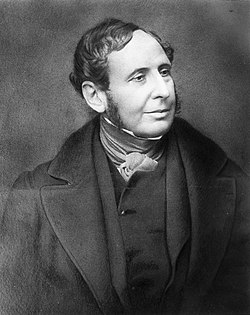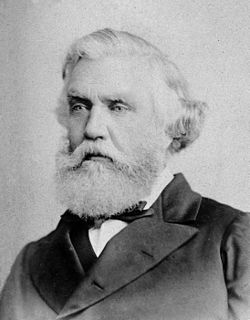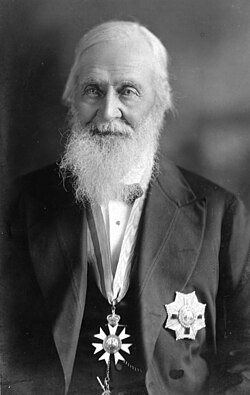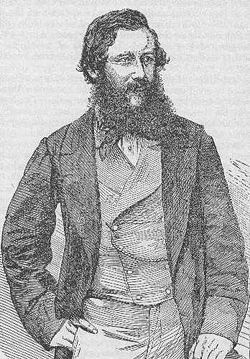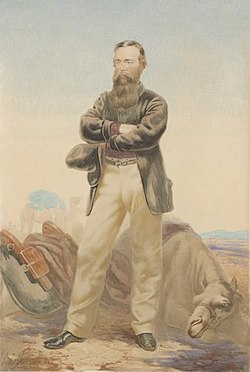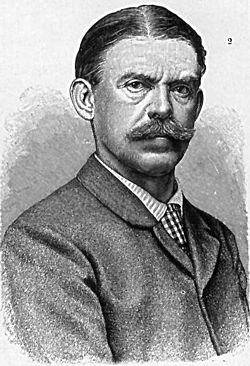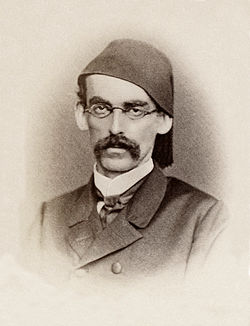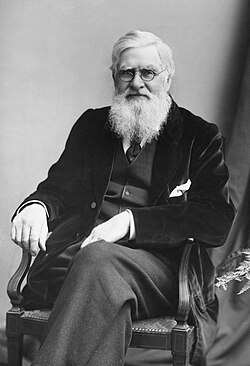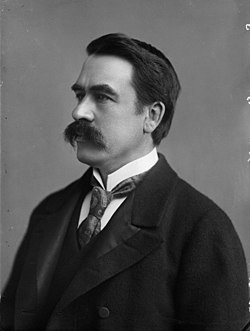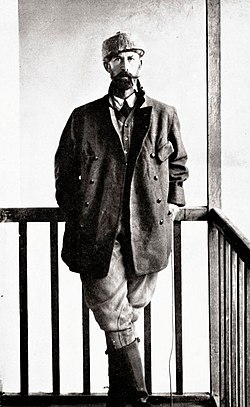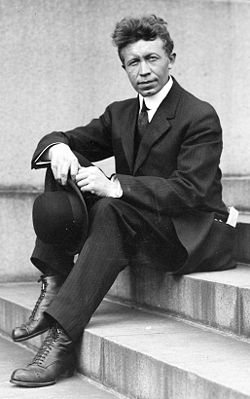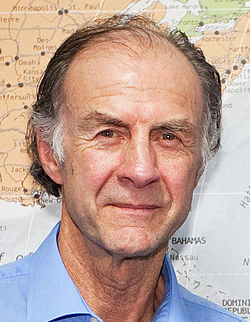Year Name Image Description Award Rationale 1832 Richard Lemon Lander Cornish explorer For the discovery of the course of the River Niger or Quorra, and its outlets in the Gulf of Benin 1833 John Biscoe English mariner and explorer For the discovery of the land now named "Enderby's Land" and "Graham's Land" in the Antarctic Ocean 1834 John Ross Scottish Royal Navy officer and polar explorer For his discovery of Boothia Felix and King William Land and for his famous sojourn of four winters in the Arctic 1835 Alexander Burnes Explorer, political officer in British India (1805-1841) For his remarkable and important journeys through Persia 1836 George Back British Royal Navy admiral (1796–1878) For his recent discoveries in the Arctic, and his memorable journey down the Great Fish River 1837 Robert Fitzroy English Vice-Admiral of the Royal Navy and scientist (1805–1865) For his survey of the coasts of South America, from the Rio de la Plata to Guayaquil in Peru 1838 Francis Rawdon Chesney British Army general For valuable materials in comparative and physical geography in Syria, Mesopotamia and the delta ofSusiana 1839 Thomas Simpson Scottish arctic explorer For tracing the hitherto unexplored coast to the west between Return Reef and point Barrow, in 1837; and during the past year has discovered 90 miles of coast eastward from Point Turnagain of Franklin, on the northern shore of America. 1840 Sir Henry Rawlinson, 1st Baronet British politician (1810-1895) l for his travels and researches in Susiana and Persian Kurdistan, and for the light thrown by hom on the comparative geography of Western Asia. 1841 Henry Raper British Royal Navy officer (1799-1859) For excellent work on Practical Navigation and Nautical Astronomy 1842 James Clark Ross British explorer and naval officer (1800–1862) For his brilliant achievement at the South Pole, to within less than 12° of which he safely navigated hisvessels, discovering a great Antarctic continent 1843 Edward John Eyre British explorer and colonial administrator (1815–1901) For his enterprising and extensive explorations in Australia, under circumstances of peculiar difficulty 1844 William John Hamilton British geologist (1805-1867) For valuable researches in Asia Minor 1845 Charles Tilstone Beke British geographer For his exploration in Abyssinia 1846 Paweł Strzelecki Polish explorer and geologist For exploration in the south eastern portion of Australia 1847 Charles Sturt Australian explorer (1795-1869) For explorations in Australia, and especially for his journey fixing the limit of Lake Torrens and penetrating into the heart of the continent to lat. 24° 30'S, long. 138° 0'E 1848 James Brooke White Rajah of Sarawak (1803-1868) For his expedition to Borneo, and the zeal he has shown in promoting geographical discovery 1849 Austen Henry Layard British politician (1817–1894) For important contributions to Asiatic Geography, interesting researches in Mesopotamia, and for his discovery of the remains of Nineveh 1852 John Rae Scottish explorer (1813-1893) For his survey of Boothia undermost severe privations and for his very important contributions to the Geography of the Arctic 1853 Francis Galton English polymath: geographer, statistician, eugenicist For fitting out and conducting in Expedition to explore the centre of Southern Africa 1854 William Henry Smyth English naval officer and hydrographer (1788-1865) For his valuable Maritime Surveys in the Mediterranean 1856 Elisha Kent Kane American explorer and military medical officer For services and discoveries in the Polar Regions during the American Expeditions in search of Sir JohnFranklin 1857 Augustus Charles Gregory Australian explorer (1819-1905) For extensive and important explorations in Western and Northern Australia 1858 Richard Collinson British Royal Navy admiral (1811-1883) For discoveries in the Arctic Regions 1859 Richard Francis Burton British explorer, geographer, translator, writer, soldier, orientalist, cartographer, ethnologist, spy, linguist, poet, fencer, and diplomat For his various exploratory enterprises, and especially for his perilous expedition with Captain. J. H. Speke to the great lakes in Eastern Africa 1860 Jane Franklin British explorer For self-sacrificing perseverance in sending out expeditions to ascertain the fate of her husband 1861 John Hanning Speke British military officer and explorer For his eminent geographical discoveries in Africa, and especially his discovery of the great lake Victoria Nyanza 1862 Robert O'Hara Burke Australian explorer In remembrance of that gallant explorer who with his companion Wills, perished after having traversed the continent of Australia 1863 Francis Thomas Gregory English-born Australian explorer and politician (1821–1888) For successful explorations in Western Australia 1864 James Augustus Grant Scottish explorer and collector (1827 – 1892) For his journey across Eastern Equatorial Africa with Captain Speke 1865 Thomas George Montgomerie English surveyor who worked in India (1830-1878) For his great trigonometrical journey from the plains of the Punjab to the Karakoram Range 1866 Thomas Thomson Scottish doctor and botanist (1817-1878) For his researches in the Western Himalayas and Thibet 1867 Aleksei Butakov Russian admiral and explorer For being first to launch and navigate ships in the Sea of Aral and for his survey of the mouths of the Oxus 1868 August Heinrich Petermann German cartographer (1822-1878) For his important services as a Writer and Cartographer and Science, and for his well-known publication the Geographische Mitteilungen which for twelve years has greatly aided the process of Geography. 1869 Adolf Erik Nordenskiöld Finland Swedish baron, geologist, mineralogist and Arctic explorer (1832–1901) For designing and carrying out the Swedish expeditions to Spitzbergen ... whereby great additions havebeen made to our acquitance with zoology, botany, geology and meteorology 1870 George W. Hayward British explorer For his journey into Eastern Turkistan, and for reaching the Pamir Steppe 1871 Roderick Murchison, 1st Baronet geologist (1792-1871) Who for 40 years watched over the Society with more than paternal solicitude, and has at length placed it among the foremost of our scientific Societies 1872 Henry Yule Scottish orientalist For eminent services to Geography 1873 Ney Elias British explorer (1844-1897) For his enterprise and ability in surveying the course of the Yellow River, and for his journey through Western Mongolia 1874 Georg August Schweinfurth German explorer and scientist (1836-1925) For his explorations in Africa 1875 Carl Georg Ludwig Wilhelm Weyprecht Austrian explorer (1838-1881) For his enterprise and ability in command of expeditions to Spitzbergen and Nova Zembla 1876 Verney Lovett Cameron traveller from England For his journey across Africa from Zanzibar to Benguela, and his survey of Lake Tanganyika 1877 George Nares British naval officer and Arctic explorer (1831-1915) For having commanded the Arctic Expedition of 1875/6, during which ships and sledge parties reached a higher Northern latitude than had previously been attained 1878 Ferdinand von Richthofen German traveller, geographer and scientist (1833-1905) For his extensive travels and scientific explorations in China 1879 Nikolay Przhevalsky Russian soldier, explorer, & geographer (1839-1888) For successive expeditions and route-surveys in Mongolia and the high plateau of Northern Tibet 1880 Louis Palander Swedish admiral For his services in connection with the Swedish Arctic Expeditions in the Vega 1881 Alexandre de Serpa Pinto Explorer and soldier For his journey across Africa during which he explored 500 miles of new country 1882 Gustav Nachtigal German explorer of Central and West Africa For his journeys through the Eastern Sahara 1883 Joseph Dalton Hooker British botanist, lichenologist, and surgeon (1817–1911) For eminent services to scientific Geography 1884 Archibald Ross Colquhoun Rhodesian politician (1848-1914) For his journey from Canton to the Irrawadi 1885 Joseph Thomson Scottish geologist and explorer For his zeal, promptitude and success during two expeditions into East Central Africa 1886 Adolphus Greely American army officer and polar explorer For having so considerably added to our knowledge of the shores of the Polar Sea and the interior of Grinnell Land 1887 Thomas Holdich English geographer, writer and soldier; surveyed the Indian frontier, and Chilean-Argentine border For zeal and devotion in carrying out surveys of Afghanistan 1888 Clements Markham British geographer (1830-1916) In acknowledgment or the value or his numerous contributions to geographical literature ... on his retirement from the Secretaryship of the Society after 25 years’ service 1889 Arthur Douglas Carey British traveller in Central Asia (?-1936) For his remarkable journey in Central Asia during which he travelled 4750 miles through regions never visited by an Englishman 1890 Emin Pasha German colonial governor (1840-1892) For the great services he rendered to Geography during his twelve years’ administration of the Equatorial Province of Egypt 1891 James Hector Scottish born New Zealand geologist, naturalist, and surgeon (1834-1907) For investigations pursued as Naturalist to the Palliser expedition 1892 Alfred Russel Wallace British naturalist, explorer, geographer, anthropologist and biologist (1823-1913) The well-known naturalist and traveller and co-discoverer with Charles Darwin of the theory of natural selection, in recognition of the high geographical value of his great works 1893 Frederick Selous British explorer, officer, hunter, and conservationist In recognition of twenty years’ exploration and surveys in South Africa 1894 Hamilton Bower British general For his remarkable journey across Tibet, from west to east 1895 John Murray Scottish oceanographer, marine biologist and limnologist For services to physical Geography, especially oceanography, and for his work on board the Challenger 1896 William MacGregor British colonial governor and administrator (1846-1919) For services to Geography in British New Guinea, in exploring, mapping and giving information on the natives 1897 Pyotr Semyonov-Tyan-Shansky Russian geographer, art collector and statistician (1827-1914) For his long-continued efforts in promoting Russian exploration in Central Asia 1898 Sven Hedin Swedish geographer, topographer, explorer, photographer, travel writer and illustrator (1865-1952) For important exploring work in Central Asia 1899 Louis Gustave Binger French explorer (1856-1936) For valuable work within the great bend of the Niger 1900 Henry Hugh Peter Deasy British Army officer and businessman (1866-1947) For exploring and survey work in Central Asia 1901 Prince Luigi Amedeo, Duke of the Abruzzi Italian explorer For his journey to the summit of Mount St. Elias, and for his Arctic voyage in the Stella Polare 1902 Frederick Lugard, 1st Baron Lugard British colonial administrator (1858-1945) For persistent attention to African Geography 1903 Douglas William Freshfield British lawyer, mountaineer and author In recognition of his valuable contributions to our knowledge of the Caucasus 1904 Harry Johnston British explorer, botanist, linguist and colonial administrator (1858-1927) For his many valuable services towards the exploration of Africa 1905 Martin Conway, 1st Baron Conway of Allington British politician (1856-1937) For explorations in the mountain regions of Spitsbergen 1906 Alfred Grandidier French naturalist and explorer The veteran French savant who for forty years has devoted himself to the exploration of Madagascar, and for his monumental work on the island in 52 large quarto volumes 1907 Francisco Moreno Argentinian explorer and naturalist (1852–1919) For extensive explorations in the Patagonian Andes 1908 Boyd Alexander British Army officer, explorer and ornithologist (1873-1910) For his three years’ journey across Africa from the Niger to the Nile 1909 Aurel Stein Hungarian-British archaeologist (1862-1943) For his extensive explorations in Central Asia, and in particular his archaeological work 1910 Henry Haversham Godwin-Austen English geologist, topographer and surveyor For geographical discoveries and surveys along the North-eastern frontier of India, especially his pioneerexploring in the Karakoram 1911 Pyotr Kozlov Russian explorer For explorations in the Gobi desert, Northern Tibet and Mongolia 1912 Charles Montagu Doughty British poet (1843-1926) For his remarkable exploration in Northern Arabia, and for his classic work in which the results weredescribed 1914 Albrecht Penck German geologist and geographer For his advancement of almost every branch of scientific geography, and in particular his idea of anInternational map of the world on the millionth scale 1915 Douglas Mawson Australian geologist and explorer of the Antarctic (1882-1958) For his conduct of the Australian Antarctic Expedition which achieved highly important scientific results 1916 Percy Fawcett British explorer, anthropologist and archaeologist For his contributions to the mapping of South America 1917 David George Hogarth British archaeologist (1862-1927) For explorations in Asiatic Turkey 1918 Gertrude Bell English writer, traveller, political officer, archaeologist (1868-1926) For her important explorations and travels in Asia Minor, Syria, Arabia and on the Euphrates 1919 Evan Maclean Jack British cartographer (1873-1951) For his geographical work on the Western Front 1920 St John Philby English Arabist, explorer, writer, and British colonial office intelligence officer For his two journeys in South Central Arabia 1921 Vilhjalmur Stefansson Canadian-born explorer (1879–1962) For his distinguished services in the exploration of the Arctic Ocean 1922 Charles Howard-Bury British soldier, explorer, botanist and Conservative politician (1883-1963) For his distinguished services in command of the Mount Everest Expedition 1923 Knud Rasmussen Danish explorer and anthropologist For exploration and research in the Arctic regions 1924 Ahmed Hassanein Pasha رئيس الديوان الملكي سابقاً Egyptian politician and geographic explorer For his journey to Kufra and Darfur 1925 Charles Granville Bruce British mountain climber For lifelong geographical work in the exploration of the Himalaya and his leadership of the Mount Everest Expedition of 1922 1926 Edward Felix Norton British army officer and mountaineer For his distinguished leadership of the Mount Everest Expedition, 1924, and his ascent to 28,100 feet 1927 Kenneth Mason British geographer For his connection between the surveys of India and Russian Turkestan, and his leadership of the Shakshagam Expedition 1928 Tom George Longstaff British explorer (1875-1964) For long-continued geographical work in the Himalaya 1929 Francis Rodd, 2nd Baron Rennell British Army general (1895-1978) For his journeys in the Sahara and his studies of the Tuareg people 1930 Frank Kingdon-Ward British botanist (1885-1958) For geographical exploration, and work on botanical distribution in China and Tibet 1931 Bertram Thomas Civil servant and explorer For geographical work in Arabia and his successful crossing of the Rub al Khali 1932 Gino Watkins British Arctic explorer For his work in the Arctic Regions, especially as leader of the British Arctic Air Route Expedition 1933 James Wordie Scottish polar explorer For work in Polar explorations 1934 Hugh Ruttledge British colonial administrator For his journeys in the Himalayas and his leadership of the Mount Everest Expedition, 1933 1935 Ralph Alger Bagnold British Army officer (1896-1990) For journeys in the Libyan Desert 1936 George W. Murray surveyor (1885-1966), working in Egypt For explorations and surveys in the deserts of Sinai and Eastern Egypt, and his studies of the Badawin tribes 1937 Clinton Gresham Lewis surveyor (1885-1978) For surveys in Iraq, Syria and the Irrawaddy Delta, and for his work on the Afghan and Turco-Iraq Boundary Commissions 1938 John Rymill Australian explorer (1905–1968) For the valuable scientific work of his British Grahamland Expedition 1939 Arthur Mortimer Champion surveyor and administrator in British Kenya (1885-1950) For his surveys of the Turkana Province (Kenya) and the volcanoes south of lake Rudolf 1940 Doreen Ingrams Ingrams [née Shortt], Doreen Constance (1906–1997), actress and traveller For exploration and studies in the Hadhramaut 1940 Harold Ingrams British colonial official (1897-1973) For exploration and studies in the Hadhramaut 1941 Pat Clayton British intelligence officer For his surveys in the Libyan desert, and his application of his experience to desert warfare. 1942 Freya Madeline Stark British travel writer (1893-1993) For her travels in the East and her account of them 1945 Charles Camsell Canadian politician and geologist (1876-1958) For his contributions to the geology of the North 1946 Edward Aubrey Glennie For his work on geodesy in India and his contributions to mapping in the Far East 1947 Martin Hotine British Army officer (1898-1968) For research work in Air Survey and for his cartographic work 1948 Wilfred Thesiger British explorer (1910-2003) For contributions to the Geography of Southern Arabia and for his crossing of the Rub al Khali desert 1949 Laurence Dudley Stamp British geographer (1898-1966) For his work in organising the Land Utilisation Survey of Great Britain and his application of Geography to National planning 1950 George F. Walpole director of the Department of Lands and Survey, Jordan For contributions to the mapping of the Western Desert of Egypt 1951 Vivian Fuchs British explorer For his contributions to Antarctic exploration and his research as leader of the survey 1948-50 1952 Bill Tilman British explorer For exploratory work among the mountains of East Africa and Central Asia 1953 Patrick Douglas Baird glaciologist (1912-1984) For explorations in the Canadian Arctic 1954 John Hunt, Baron Hunt British mountaineer, explorer and army officer (1910-1998) Leader of the British Mount Everest Expedition 1955 John Kirtland Wright American geographer For services in the development of geographical research and exploration 1956 John Schjelderup Giæver Norwegian writer Leader of the Norwegian-British-Swedish Antarctic Expedition, for contributions to Polar exploration 1957 Ardito Desio Italian explorer For geographical exploration and surveys in the Himalayas 1958 Paul Siple American explorer (1908-1968) For contributions to Antarctic exploration and research 1959 William Anderson United States naval officer For the first trans-Polar submarine voyage in command of USS Nautilus 1960 Phillip Law Australian scientist and explorer For Antarctic exploration and research 1961 Mikhail Somov Soviet oceanographer and polar explorer For Antarctic exploration and research 1962 Edwin McDonald United States Navy captain For coastal explorations in the Bellingshausen Sea (Antarctica) 1963 Jacques Cousteau French Naval Officer who co-invented open circuit demand scuba For underwater exploration and research 1964 Louis Leakey British archaeologist and naturalist For palaeographical exploration and discoveries in East Africa 1965 Fred Roots geologist and explorer (1923–2016) For Polar exploration and research, with special reference to the Canadian Arctic 1966 Edred John Henry Corner English botanist and mycologist (1906-1996) For botanical exploration in North Borneo and the Solomon Islands 1967 Cláudio Villas-Bôas Brazilian sertanista (1916-1998) For contributions to exploration and development in the Mato Grosso 1967 Orlando Villas Bôas Brazilian anthropologist For contributions to exploration and development in the Mato Grosso 1968 W. Brian Harland British geologist (1917-2003) For Arctic exploration and research 1969 Rodolfo Panzarini naval officer and Antarctic explorer For services to Antarctic exploration and research and to international co-operation in Antarctic science 1970 Wally Herbert British polar explorer (1934-2007) For Arctic and Antarctic exploration and surveys 1971 George Deacon British oceanographer and chemist (1906-1984) For oceanographical research and exploration 1972 George Stephen Ritchie Royal Navy admiral (1914-2012) For hydrographical charting and oceanographical exploration 1973 Norman Falcon British geologist (1904-1996) Leader, the RGS’s Musandam [North Oman] Expedition. For contributions to the geographical history of thePersian Gulf region 1974 Chris Bonington British mountaineer For mountain explorations 1975 Laurence Kirwan British archaeologist and geographer For contributions to the geographical history of the Nubian Nile valley and Eastern Africa, and for services toexploration 1976 Brian Birley Roberts polar expert and ornithologist (1912-1978) For Polar exploration, and for contributions to Antarctic research and political negotiation 1977 Michael John Wise geographer (1918-2015) For economic Geography, and for his contributions to international understanding in geographical teaching 1978 Reginald Llewellyn Brown British military officer and surveyor, Director-General of the Ordnance Survey (1895-1983) For services to the science of map-making 1979 David Stoddart geographer For contributions to geomorphology, the study of coral reefs and the history of academic Geography 1980 William Richard Mead British geographer (1915-2014) 1981 Keith John Miller mechanical engineer, explorer and mountaineer (1932-2006) 1982 Michael Ward British surgeon and mountaineer (1925-2005) For high-altitude medical research and leadership of the British Mount Kongur Expedition 1983 Peter Scott British ornithologist, conservationist, painter, naval officer and sportsman (1909-1989) 1984 Ranulph Fiennes British explorer (born 1944) 1985 David Attenborough British broadcaster and naturalist 1986 Tim Severin British explorer, historian, writer (1940-2020) 1987 Anthony Seymour Laughton British oceanographer 1988 Peter Hall town planner, urbanist and geographer (1932-2014) 1989 Monica Kristensen Solås Norwegian explorer 1990 John Hemming Canadian explorer 1991 Andrew Goudie British geographer 1992 Alan Wilson British mathematician and geographer For contributions to the study of urban and regional systems. 1993 Kenneth J. Gregory British geographer (1938–2020) For contributions to hydrology and geomorphology. 1994 Ronald Urwick Cooke British geographer for contribution to geomorphology. 1995 Gathorne Gathorne-Hardy, 5th Earl of Cranbrook zoologist, environmental biologist and author (1933-), chairman of the Institute for European Environmental Policy 1996 John Woods British oceanographer for contributions to oceanography 1997 Tony Wrigley British historical demographer 1998 Robert J. Bennett economic geographer (1948-) 1999 Mike Kirkby British geographer For contributions to the development of processed-based and modelling approaches in geomorphology 2000 Brian Robson geographer at the University of Manchester For contributions to urban geography and geographical perspectives to urban policy 2001 William L. Graf American geographer (1947-2019) For contributions to research on dryland river processes, and the interactions of science and public policy 2002 Bruno Messerli Swiss geographer and university professor (1931-2019) For contributions to mountain research and the public awareness of mountain issues 2003 Michael Frank Goodchild professor of geographic information science For contributions to geographical information science 2004 Leszek Starkel Polish geographer For advancing international understanding of palaeohydrology and geomorphology 2005 Nicholas Shackleton British geologist (1937-2006) For research on Quaternary palaeoclimatology 2006 Derek Gregory British geographer For international leadership of research in human geography and social theory 2007 Roger G. Barry British-born American climatologist and geographer (1935-2018) For international leadership of research on climate and climate change 2008 Julian A. Dowdeswell British glaciologist For the encouragement, development and promotion of glaciology 2009 Alan R. H. Baker Geographer at the University of Cambridge (1938-) For contributions to historical geography 2010 Diana Liverman geographer and science writer For encouraging, developing and promoting understanding of the human dimensions of climate change 2011 David N. Livingstone British academic For the encouragement and promotion of historical geography 2012 Charles W. J. Withers Scottish linguist and geographer For the encouragement and development of historical and cultural geography 2013 Keith S. Richards geographer at the University of Cambridge For the encouragement and development of physical geography and fluvial geomorphology 2014 Geoffrey Boulton British geologist For the development and promotion of glaciology 2015 Michael Batty British academic For development and promotion of the geographical science of cities 2016 Michael Storper economic and urban geographer For scholarship and leadership in human and economic geography 2017 Gordon Conway British ecologist For the enhancement and promotion of agricultural development in Asia and Africa 2018 Paul Rose British explorer and TV presenter For scientific expeditions and enhancing public understanding 2019 Trevor J. Barnes Canadian geographer For sustained excellence and pioneering developments in the field of economic geography 2020 Heather A. Viles geographer For her excellence in establishing the field of biogeomorphology 2021 Andy Eavis speleologist & mining engineer For significant contribution in leading speleological expeditions, exploring and recording some of the largest caves in the world for over 50 years 2022 David Hempleman-Adams British industrialist and adventurer For enabling science through expeditions, and inspiring younger generations of geographers 2023 Andrew W. Mitchell zoologist For his lifetime’s contribution to protect tropical rainforests and combat climate change 2024 Vanessa Lawrence British geographer For outstanding contributions to the promotion of geography in the UK and internationally 




